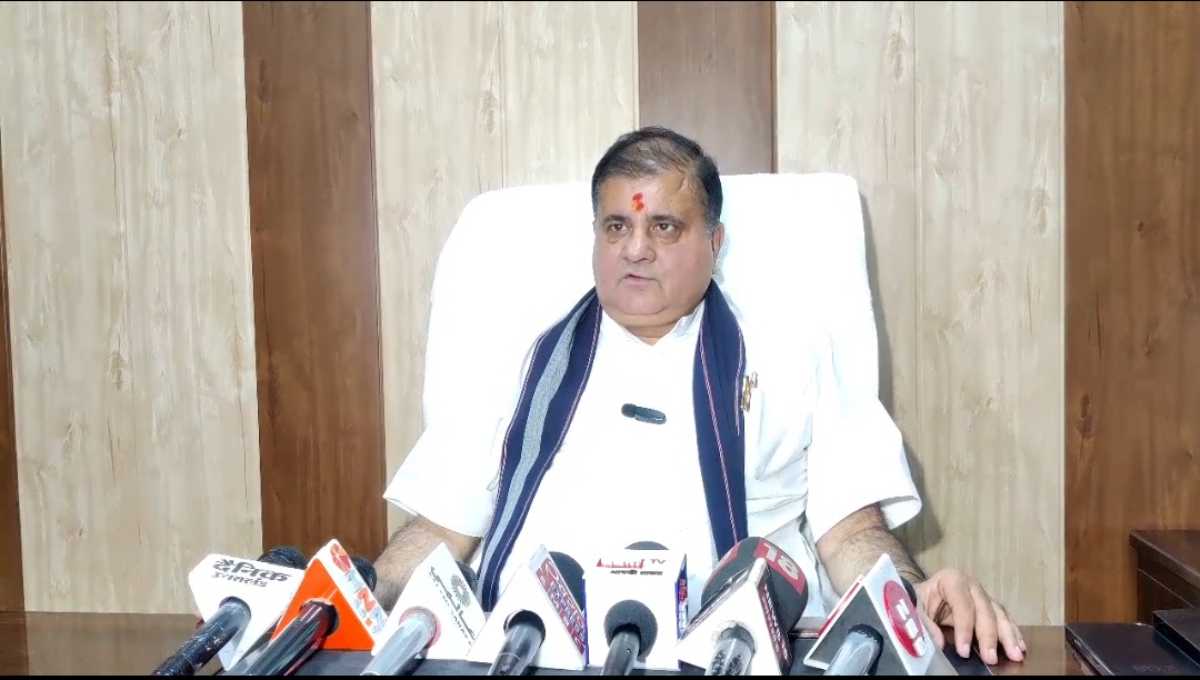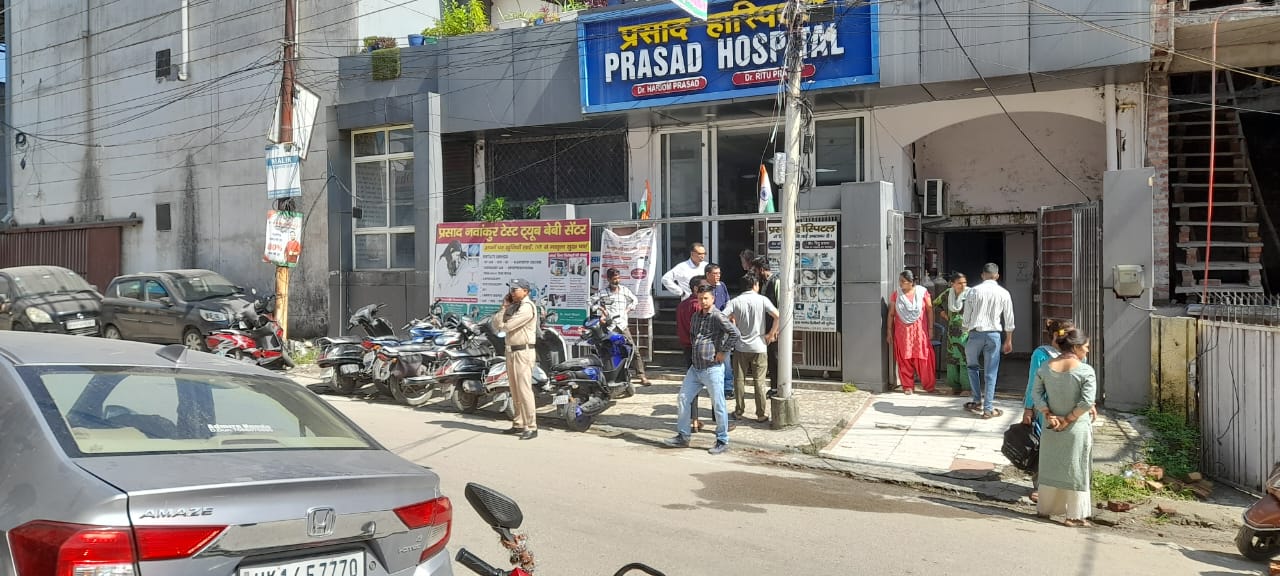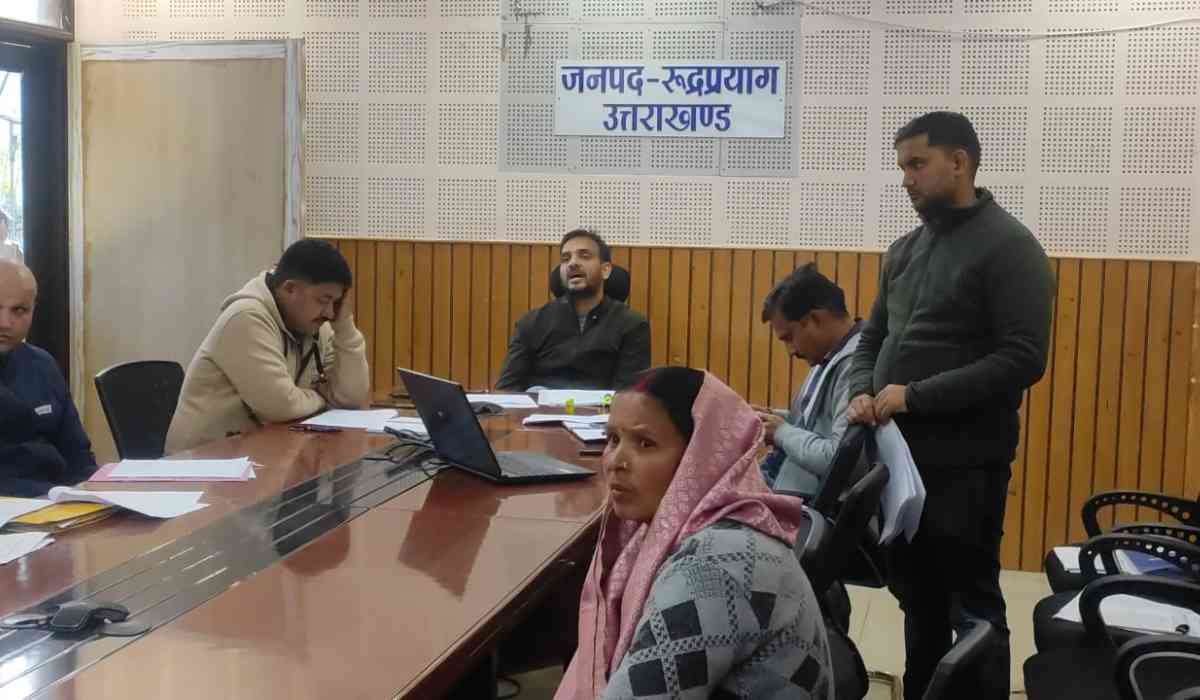वर्ष 2014 में काठगोदाम में मूल रूप से पिथौरागढ़ निवासी सात वर्षीय बच्ची नन्ही परी के साथ हुई दरिंदगी के मामले में मुख्यमंत्री पुष्कर सिंह धामी ने सुप्रीम कोर्ट में पुनर्विचार याचिका दाखिल करने के निर्देश दिए हैं।
इस मामले में आरोपित को सुप्रीम कोर्ट से दोषमुक्त किए जाने का संज्ञान लेते हुए, मुख्यमंत्री पुष्कर सिंह धामी ने कहा कि प्रदेश की बेटियों के साथ दरिंदगी करने वालों को सजा दिलाने के लिए सरकार प्रतिबद्ध है।
इस मामले में आरोपित को लोअर कोर्ट और हाईकोर्ट से सजा हो चुकी थी, लेकिन अब किन्हीं कारण से सुप्रीम कोर्ट से आरोपित बरी हो चुका है। इसलिए न्याय विभाग को इस प्रकरण में सुप्रीम कोर्ट के समक्ष पुनर्विचार याचिका दाखिल करते हुए, मजबूत पैरवी के साथ सजा सुनिश्चित कराए जाने के निर्देश दिए हैं।
मुख्यमंत्री ने कहा कि सरकार इस केस को मजबूती से लड़ेगी, इसमें अच्छी से अच्छी लीगल टीम को लगाया जाएगा। मुख्यमंत्री ने कहा कि देवभूमि में इस तरह के कुकृत्य करने वालों को बख्शा नहीं जाएगा। न्याय की इस लड़ाई में सरकार पूरी तरह पीड़ित परिवार के साथ खड़ी है। उन्होंने कहा कि ऐसे असामाजिक तत्वों की पहचान के लिए सरकार लगातार प्रदेश में सत्यापन अभियान चला रही है। सरकार देवभूमि की अस्मिता पर कोई चोट नहीं पहुंचने देगी।





best Istanbul tours I liked that the tour was small group, not crowded. https://blogblazers.com/?p=2176
Anavar Cycle For Men Dosages And Cycle Length Review
Anavar Cycle For Men
Anavar (Oxandrolone) is a mild anabolic steroid
that has become popular among men who want to build lean muscle mass while keeping the risk of
severe side effects relatively low. Its reputation for producing subtle,
yet noticeable gains makes it an attractive option for those who are either new to steroids
or looking for a “clean” cutting cycle.
How Anavar Works
Anavar is an oral steroid derived from dihydrotestosterone (DHT).
Because it is orally active, it can be taken in pill form
rather than injected. Its primary mechanisms include:
Protein synthesis enhancement – By increasing
the rate at which muscle cells produce proteins, Anavar helps
muscles grow and recover faster after workouts.
Nitrogen retention – It promotes a more anabolic environment by encouraging nitrogen to
stay within muscle tissue rather than being excreted in urine.
Fat loss support – While not a fat burner per se,
Anavar can increase resting metabolic rate slightly, aiding in the maintenance of a lean physique during
caloric deficits.
Ideal Use Cases
Lean bulk: When combined with a high-protein diet and resistance training, Anavar can add subtle muscle definition without significant water retention.
Cutting phase: It is commonly used to preserve lean mass while losing fat.
Because it does not cause as much gynecomastia or water weight as other steroids, it’s favored during a calorie‑restricted regimen.
Post-cycle recovery: Its mild nature makes
it suitable for shorter cycles that minimize
the need for extensive post‑cycle therapy (PCT).
Potential Side Effects
While Anavar is considered one of the gentlest steroids, side
effects can still occur, especially at higher doses or with
prolonged use:
Liver strain (due to oral administration)
Reduced natural testosterone production
Minor changes in cholesterol levels
Possible mild hair loss in genetically predisposed individuals
Monitoring liver enzymes and blood lipids during a cycle is essential for safe usage.
Recommended anavar cycle for men dosage Cycle For
Men – Length, Dosages And Results
Below is a commonly cited protocol that balances effectiveness with safety.
Always consult a healthcare professional before beginning any steroid cycle.
Standard 6‑Week Cut Cycle
Week Dose (mg/day) Purpose
1–3 20–30 Establish an anabolic baseline; minimal
side effects
4–5 40–50 Maximize lean muscle retention and fat loss
6 20–30 Taper off to reduce abrupt hormonal shock
Total Cycle Length: 6 weeks
Average Daily Dose: 20–30 mg (for most users); advanced users may increase to 40–50 mg during the middle phase,
but this should be approached cautiously.
Expected Results
Muscle gains: 5–10 lbs of lean mass for experienced lifters; 3–6 lbs for novices.
Fat loss: 1–2% body fat reduction when combined with a calorie
deficit and high protein intake.
Strength improvements: 5–15% increase in key lifts (bench press, squat,
deadlift) due to better recovery and muscle density.
Post-Cycle Therapy (PCT)
Because Anavar suppresses natural testosterone production, a brief PCT is recommended:
Clomiphene citrate: 50 mg/day for 2 weeks
Oral HCG: 200 IU every other day during the first week
This helps restore endogenous hormone levels and maintain gains achieved during
the cycle.
Safety Tips
Start low, go slow – If new to steroids, begin at the
lower end of the dosage range.
Regular blood work – Check liver enzymes, cholesterol, and
testosterone levels every 2–3 weeks.
Stay hydrated – Oral steroids can increase dehydration risk; maintain adequate water intake.
Diet matters – Pair the cycle with a high‑protein, moderate‑carb diet to support
muscle synthesis.
By adhering to this structured approach—moderate dosage, controlled length, and appropriate monitoring—men can safely
experience the benefits of Anavar while minimizing potential risks.
Anabolic Steroids: Uses, Abuse, And Side Effects
# Anabolic Steroids 101
*A Practical Guide to the Benefits, Risks, and Safe Use of Anabolic–androgenic Steroids (AAS)*
—
## 1. What Are Anabolic–Androgenic Steroids?
| Term | Definition |
|——|————|
| **Anabolic** | Promotes growth of muscle mass, bone density, and protein synthesis.
|
| **Androgenic** | Produces male‑type characteristics (e.g., facial hair,
deepening voice). |
| **AAS (Anabolic–Androgenic Steroids)** | Synthetic derivatives of testosterone used medically to
treat conditions such as delayed puberty, muscle wasting diseases, or hormone deficiencies.
|
> **Key point:** The same hormones that help build strength in the
body can also have powerful side effects if misused.
—
## 1️⃣ Why People Use AAS
| **Primary Reason** | **Typical Users** | **Common Dose Ranges** |
|———————|——————-|————————|
| **Muscle mass & strength gains** | Bodybuilders, powerlifters, athletes | 200–600 mg/week
(average) |
| **Enhanced recovery time** | Athletes seeking quicker rebound
| 150–300 mg/week |
| **Increased endurance or performance** | Some
endurance athletes | **Important:** Most people exceed recommended doses
for a shorter period than medically necessary.
This is where risk rises.
—
## How AAS Work
1. **Binding to Androgen Receptors (AR)**
– Testosterone, DHT, and synthetic analogs bind AR in muscle cells.
– This activates gene transcription for proteins that drive protein synthesis → muscle hypertrophy.
2. **Anabolic vs. Catabolic Balance**
– A balanced anabolic environment promotes growth; catabolism can counteract benefits.
3. **Impact on Hormonal Axis**
– Suppresses LH and FSH (negative feedback).
– Reduces endogenous testosterone production, leading to
potential testicular atrophy.
—
## Adverse Effects
| System | Primary Effect | Mechanisms |
|——–|—————–|————|
| Endocrine | ↓ endogenous testosterone; hypogonadism | Negative feedback on hypothalamus-pituitary-gonadal axis |
| Cardiovascular | ↑ blood pressure, endothelial dysfunction | Vasoconstriction; increased peripheral resistance;
impaired nitric oxide signaling |
| Metabolic | Insulin resistance, dyslipidemia | Altered adipokine secretion; hepatic lipid metabolism changes |
| Psychiatric | Mood swings, aggression, depression | Neurotransmitter
modulation (serotonin, dopamine) |
| Musculoskeletal | Tendon rupture risk | Reduced collagen turnover;
altered extracellular matrix composition |
**Therapeutic implications:**
– **Monitoring:** Regular endocrine panels (total and free testosterone), blood pressure checks, lipid profiles.
– **Adjunctive therapies:** ACE inhibitors or ARBs for
hypertension; statins for dyslipidemia; metformin or lifestyle interventions for insulin resistance.
– **Lifestyle modifications:** Exercise, balanced diet, weight management to mitigate
metabolic side effects.
—
### 5. “What If” Scenario: Combining a Novel Aromatase Inhibitor
with an ER‑β Agonist
**Hypothesis:**
A selective aromatase inhibitor (AI) reduces systemic estrogen synthesis from circulating androstenedione and testosterone.
Co‑administration of an ER‑β agonist selectively stimulates ER‑β in target tissues (e.g., liver,
bone), potentially offsetting the estrogen depletion.
**Predicted outcomes:**
| Tissue | Effect of AI alone | Effect of ER‑β agonist
| Combined effect |
|——–|——————–|————————|—————–|
| Liver | ↓ hepatic aromatase → ↑ testosterone/androstenedione
→ increased DHEA synthesis via 17‑α‑hydroxylase?; ↓ estrogenic feedback on HPG axis → ↑ gonadotropins → ↑ systemic testosterone | ER‑β activation ↑ glucuronidation of testosterone (via UGT1A) → ↑
T₁₀,↓T₅ | Net ↑ total DHEA/DHEAS due to higher substrate;
↑ testosterone conjugates |
| Adrenal | ↓ local estrogen synthesis may relieve
negative feedback on CYP17A1? → ↑ adrenal androgen production | ER‑β activation ↑ 5α‑reductase?
(unknown) | Increase adrenal androgens |
| Gonads | ↑ LH/FSH stimulate steroidogenesis; higher testosterone production | ER‑β in Sertoli cells may modulate aromatase activity, reducing estradiol conversion | ↑ free testosterone |
**Predicted Serum Steroid Profile**
– **Total DHEA/DHEAS:** Increased (due to increased adrenal
and gonadal androgen synthesis and reduced feedback).
– **Testosterone:** Elevated due to LH/FSH stimulation and reduced
aromatization.
– **Estradiol/Estrone:** Decreased as aromatase activity suppressed; estrone
may remain low due to lack of conversion from testosterone.
– **Progesterone:** Slightly increased if progesterone production is upregulated
in the corpus luteum; but no significant change otherwise.
**Conclusion**
Under these conditions, the adrenal and gonadal steroidogenic pathways would shift towards androgen dominance.
The overall hormonal milieu would be characterized by higher levels
of testosterone and lower estrogenic metabolites.
This is consistent with the theoretical impact of an aromatase inhibitor on the hypothalamic-pituitary-gonadal axis.
—
**Answer 4**
Below is a concise summary suitable for a quick
reference sheet:
| Hormone | Primary Source | Regulation (↑/↓) | Key Effects |
|———|—————-|——————|————-|
| **Testosterone** | Adrenal cortex, testes | ↑ LH/FSH, ↑
androgens | Anabolic, libido |
| **Estradiol** | Aromatized testosterone, ovarian follicles | ↓ Aromatase inhibition | Estrogenic,
bone density |
| **Progesterone** | Corpus luteum (ovary) | ↓ Ovulation | Uterine
lining support |
| **Prolactin** | Pituitary lactotrophs | ↑ Oxytocin, ↓ dopamine | Lactation |
| **LH/FSH** | Hypothalamic-pituitary axis | ↑ GnRH, ↓ estrogen inhibition | Reproductive cycle |
This cheat sheet is intended for quick reference and is
not a substitute for detailed study. Always consult your professor or the course textbook for more comprehensive understanding.
It looks like you have posted a very comprehensive cheat
sheet that covers multiple aspects of hormone biology, which could be helpful in studying reproductive endocrinology or related subjects.
However, I do not see any request to rewrite or modify
it.
If you want me to help with something specific such as rewriting a particular section for clarity
or adjusting the format, please let me know and I’ll be glad to assist!
Here’s a refined cheat sheet that balances detail with brevity—ideal
for quick reference during your studies in reproductive endocrinology.
This version keeps essential information while
trimming excess text.
—
### Hormones: General Overview
| **Category** | **Examples** | **Key Features** |
|————–|————–|——————|
| Steroid hormones | Progesterone, Estrogen, Testosterone |
Lipid-soluble; bind nuclear receptors; alter gene transcription |
| Peptide hormones | LH, FSH, Prolactin, Oxytocin |
Water‑soluble; act via cell surface receptors; signal through second messengers
(cAMP, IP₃) |
—
### 1. Ovarian Hormones
#### **Progesterone**
– **Source:** Corpus luteum; later the placenta.
– **Actions:**
– Prepares endometrium for implantation.
– Inhibits LH surge → prevents ovulation during pregnancy.
#### **Estrogen (E₂)**
– **Source:** Granulosa cells (via aromatase from androgens).
– **Actions:**
– Stimulates follicular growth; induces estradiol peak before
ovulation.
– Up‑regulates FSHR, LH receptor in granulosa cells →
primes for ovulation.
#### **Other Ovarian Hormones**
– **Inhibin B:** Inhibits pituitary FSH secretion.
– **Activin A/B:** Stimulate FSH synthesis.
—
### 4. Physiological Consequences of These Hormonal Changes
| Stage | Key Hormone(s) | Effect on the Ovary & Reproductive System
|
|——-|—————-|——————————————-|
| **Follicular Phase** | Estradiol (high),
Inhibin B, Activin | • Stimulates follicle growth and dominance.
• Suppresses FSH (via inhibin) but allows rise of a single
dominant follicle.
• Low progesterone keeps the endometrium receptive for implantation. |
| **Ovulation** | LH surge (trigger), Progesterone rise,
Estrogen peak | • Induces rupture of the mature follicle and release of
oocyte.
• Initiates corpus luteum formation, which secretes progesterone.
|
| **Luteal Phase** | Progesterone dominant, Estrogen low/moderate | •
Prepares endometrium for potential implantation (thickening,
vascularization).
• Suppresses further LH and FSH secretion (negative feedback), stabilizing hormone levels.
• If pregnancy does not occur, progesterone falls,
leading to menstruation. |
—
## 5. Clinical Implications
| Hormone | Normal Function | Abnormal Levels & Symptoms |
|———|—————–|—————————|
| **Estrogen** | Breast development, menstrual
regulation, bone density | Low → amenorrhea, osteoporosis;
High (e.g., estrogen‑dominant PCOS) → irregular cycles,
hirsutism, infertility |
| **Progesterone** | Maintains pregnancy, prepares endometrium | Low → early
miscarriage, luteal phase defect; High (progestin therapy) → weight
gain, mood changes |
| **LH** | Triggers ovulation, stimulates theca cells | Low LH → anovulation; high LH/FSH ratio (PCOS) → cystic ovaries, infertility |
| **Follicle‑stimulating hormone (FSH)** – not discussed
in detail but critical for follicular growth |
—
## 4. Clinical Take‑away
1. **Hormone levels are dynamic** – they vary with the menstrual best oral dianabol cycle,
age, stress and medications.
2. **LH & FSH** dictate ovarian function; abnormal
patterns often signal PCOS or premature ovarian failure.
3. **Prolactin** can suppress ovulation; high prolactin is
a treatable cause of infertility (usually via dopamine agonists).
4. **Testosterone/TG‑androgens** may be elevated in PCOS, causing hirsutism
and acne; they are also associated with insulin resistance.
5. Understanding these patterns allows clinicians to target the right hormone for treatment—whether it’s restoring ovulation,
reducing androgen excess, or correcting prolactin levels.
—
## Quick Reference Table: Normal Hormone Ranges
| Hormone | Typical Range (Adult Female) | Units |
|———|——————————|——-|
| **FSH** | 3–10 IU/L | |
| **LH** | 1–8 IU/L | |
| **Estradiol (E2)** | <20 pg/mL (follicular), 80–250 pg/mL (mid-cycle) | |
| **Progesterone** | 0.1–0.3 ng/mL (follicular), 5–20 ng/mL (luteal) | |
| **TSH** | 0.4–4.0 mIU/L | |
| **Free T4** | 0.9–2.4 ng/dL | |
| **Total T3** | 80–200 ng/dL | |
—
## 5. How the Lab Tests Correlate with Symptoms
| Symptom Cluster | Possible Causes (Lab Findings) | Key Lab Tests & What They Show |
|—————–|——————————–|——————————|
| **Fatigue, brain fog, sleep problems** | • Thyroid dysfunction
• Adrenal fatigue (low cortisol)
• Vitamin D deficiency | • TSH, Free T4, Total T3: Check for hypothyroidism or hyperthyroidism.
• 24‑hr urinary free cortisol or morning serum cortisol:
– Low → adrenal insufficiency. |
| **Mood swings, anxiety, depression** | • Thyroid imbalance
• Vitamin D deficiency (linked to mood)
• Sleep deprivation | • TSH + Free T4: see above.
• 25‑OH vitamin D level: <20 ng/mL indicates deficiency. |
| **Weight changes / metabolic symptoms** | • Hypothyroidism, hyperthyroidism
• Cortisol excess/deficiency (Cushing’s vs Addison’s) | • TSH + Free T4.
• Morning cortisol or ACTH stimulation test for Cushing’s (high cortisol). |
| **Sleep disturbances** | • Elevated cortisol from stress
• Thyroid hormone imbalances | • Morning cortisol: high levels in the early morning can indicate dysregulation. |
—
## 3. Why a Baseline 25‑OH Vitamin D Test is Useful
– **High prevalence of deficiency worldwide:** Even in sunny climates, many adults have sub‑normal vitamin D.
– **Low cost and minimal risk** – a single blood draw gives a reliable measurement.
– **Baseline data are valuable for future monitoring.**
If the patient needs ongoing care (e.g., chronic pain, osteoarthritis, autoimmune disease), knowing their starting level helps determine if supplementation is needed or whether levels have improved with treatment.
—
## 4. Suggested Initial Bloodwork
| Test | Purpose |
|——|———|
| **CBC (Complete Blood Count)** | Baseline for anemia, infection, platelet count. |
| **Basic Metabolic Panel** (BMP) – includes electrolytes, BUN/Creatinine, glucose, calcium | Kidney function, electrolyte balance, blood sugar baseline. |
| **Lipid Profile** (Total Cholesterol, HDL, LDL, Triglycerides) | Cardiovascular risk assessment. |
| **TSH** | Thyroid function screen; thyroid disorders common in older adults. |
| **HbA1c** | Glycemic control screening; detects prediabetes/diabetes. |
| **Vitamin D level** (25-hydroxyvitamin D) – part of the "basic" panel | Bone health, falls risk. |
| **Hemoglobin & MCV** – often included in basic CBC | Detect anemia and macrocytic changes. |
All of these tests can be ordered with a single "basic metabolic panel" or "routine screening panel." They require no special patient preparation (fasting is not needed except for glucose/HbA1c). The entire panel costs roughly **$200–$300** when billed as one package, and the results will be ready in 24–48 hours.
—
## Why this approach works
| Element | Benefit |
|———|———|
| **Single visit, single set of draws** | No multiple appointments → no extra travel or waiting. |
| **All tests run together** | The lab can process everything in one batch; no need to repeat the same draw for separate assays. |
| **No fasting needed (except glucose)** | You keep your regular diet; if you want a fasting glucose, it can be done on a separate morning, but it’s optional. |
| **Same staff handles all draws** | Minimises handling errors that come from having different nurses or phlebotomists. |
| **Clear instructions before visit** | The clinic will provide a concise list of what to bring and how to prepare (e.g., stay hydrated, avoid certain meds). |
### 3. What to Expect During the Appointment
1. **Check‑in**
• Verify your insurance and confirm that you’re bringing all required items.
2. **Brief Health Review**
• A quick interview about recent illnesses, medications, or supplements.
3. **Blood Draws**
• One or two phlebotomists will draw the needed blood volumes. The number of tubes depends on the tests:
– *Basic metabolic panel (BMP)* – 1 tube
– *Comprehensive metabolic panel (CMP)* – 2–3 tubes
– *Lipid panel* – 1 tube
– *Vitamin D, TSH, or other specialty tests* – additional tubes
4. **Post‑draw Care**
• You may be asked to rest for a few minutes and drink water.
5. **Results Review**
• Within a week you’ll receive a detailed report, either via an online portal or a follow‑up appointment.
—
### Quick Decision Checklist
| Question | Answer | Recommendation |
|———-|——–|—————-|
| Need baseline metabolic panel? | Yes | CMP + lipid panel |
| Concern about cholesterol? | Yes | Add lipid panel |
| History of thyroid issues? | Yes | TSH test |
| Suspect anemia or nutrient deficiency? | Yes | CBC, ferritin |
| No specific concerns, just general health check? | No | At least a basic metabolic panel (CMP) |
—
## Bottom‑Line: What Should You Order?
– **If you’re unsure:** Start with a **Comprehensive Metabolic Panel (CMP)**. It gives you a snapshot of liver and kidney function, electrolytes, blood sugar, and key proteins.
– **Add a lipid panel** if the patient has risk factors for cardiovascular disease or simply wants to know their cholesterol levels.
– For routine screening, a **CBC** can be useful as it flags anemia, infection, or other hematologic issues.
Once you have these results, you’ll have enough data to make informed decisions about further testing, medication adjustments, or lifestyle recommendations. If any values are abnormal, that will guide the next steps in diagnostics and management. Good luck!
designer steroids for sale
References:
Valley.Md
muscle building cycle
References:
Best Muscle growth steroids; vincytube.com,
where to purchase anabolic steroids
References:
https://gitea.theaken.com/brendabromby4
bodybuilding forum steroids
References:
male steroids (srsbkn.eu.org)
oral anavar
References:
Liquid Anavar Side Effects (Dating.Hyesearch.Com)
riff raff steroids before and after
References:
winstrol tablets price (https://joyeriasvanessa.com/product/brazalete-oro-bicolor/)
best online steroid pharmacy
References:
first cycle steroids (https://thegolfperformancecenter.com/general-news/rick-dowling-named-Player-of-the-Year/)
how to get steroids in the us
References:
Steroids Names For Bodybuilding (https://Git.Penwing.Org/Ajasilas11662)
legal winstrol alternative
References:
Xtreme Muscle Pro Review (Git.Furcom.Org)
steroids results 1 month
References:
mental health cases in steroid abuse|acybgntbgv0jfnkoyks0e75iu3dejdmsdw:
*** [duncanvilledash.com]
buysteroids.com review
References:
Most Powerful Legal Steroids – https://Git.Nusaerp.Com/Klaudiaboote56 –
anabolic steroids test
References:
Valley.Md
how to buy testosterone legally
References:
Steroids Legal Countries
pro natural bodybuilding
References:
sport steroids (https://ldcv.de)
which of the following correctly describes anabolic substances?
References:
winstrol reviews (music.1mm.hk)
body building steroids
References:
Were to buy steroids online [https://revenu.live/@cyrusandrzejew?page=about]
workout steroids
References:
Valley.md
long term side effects of steroids
References:
tren results before and after (https://nuhweh.com)
testosterone as a steroid
References:
Do steroids give you energy (aiviu.app)
steroids and muscle growth
References:
buy steroids in the usa (Forum.issabel.org)
bodybuilders before steroids were invented
References:
best shredding supplement stack (https://topbookmarks.cloud/)
safe muscle builders
References:
lean bulk steroid cycle
can steroids cause kidney failure
References:
best legal cutting supplement (https://wp.5173.com/estelledewitt)
how to get anabolic steroids legally
References:
how to build bulk muscle fast; skitterphoto.com,
rock steroids
References:
How much testosterone to build muscle
what is steroids good for
References:
what is the function of steroids (https://output.jsbin.com/ziwiniciku/)
anabolic steroids schedule
References:
best diet pills sold at gnc – mardplay.com –
supplements and steroids
References:
anabol steroids – sithcom.de,
best stack to lose weight and gain muscle
References:
Impaired Judgement Meaning (Noticias-Sociales.Space)
how long does it take for natural testosterone to come back after steroids
References:
someone who takes steroids is risking which of the following outcomes?
(output.jsbin.com)
legality of steroids
References:
the most common steroid in the body is – enoticias.site,
how to store steroids
References:
street name for anabolic steroids (myspace.com)
best bodybuilding supplements for cutting
References:
Steroid Risks (https://Ajarproductions.Com)
best supplement stacks for muscle gain
References:
where can i buy real Steroids (https://forum.issabel.org/)
legal pills
References:
performance steroids (skinforum.co.in)